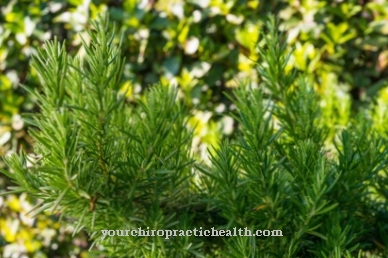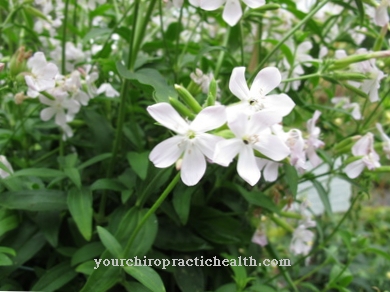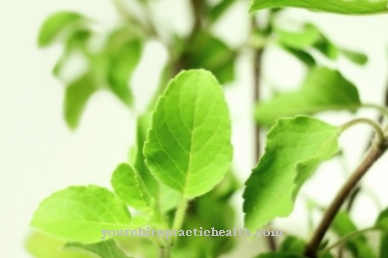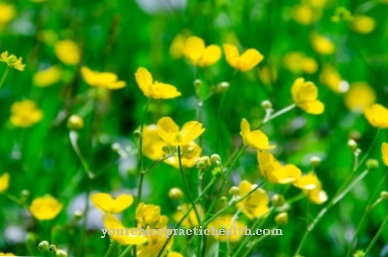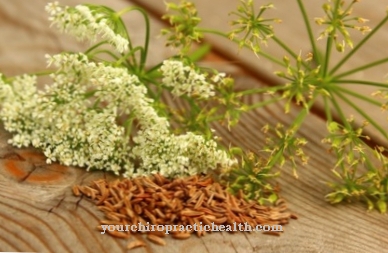Occurrence and cultivation of the English water mint

Mints are among the oldest known medicinal plants. The plant has been used since ancient times and is also mentioned in the New Testament. The botanical genus name "Mentha" can be traced back to a nymph of the same name who was the lover of Pluto and was transformed into this plant by Proserpina. Mint was considered a sacred plant by the Druids and a symbol of luck and wealth by the Celts.
Breeding and crossbreeding resulted in a very large number of different types of mint, which are still used today as spices or medicinal products. Depending on the composition of their active ingredients, they can be used in different ways. Due to the large number of species, a description is extremely difficult and so the English water mint several times a different botanical name. The English water mint is also popularly known Deer mint called. This name is derived from the Latin word cervinus which means something like "deer-like".
The medicinal plant is native to western North Africa and southern western Europe and grows mainly in places where it is humid. It belongs to the mint family and is an herbaceous plant. The mint reaches a height of about 40 centimeters, the leaves are about four centimeters long and are very narrow. The rhizome that sprouts runners under the ground or in the water is thin and long-limbed. The English water mint has blue-violet and sometimes white flowers and smells very strongly of menthol.
The mint blooms between June and September, with the flowers being found directly on the stems. The flowers are five-fold and have a double flower envelope. The seeds develop from these until late autumn. The water mint contains menthol, lime, essential oils and tannins, is also a very good pond plant and thrives in garden ponds or in swampy soils. It grows best in sunny or partially shaded locations.
The plant spreads through sprouts, but it does not proliferate, so that the bank area cannot be taken over. In pots, however, the water mint is only partially hardy, so it is advisable to sink it into the ground.
Effect & application
The English water mint is used to treat gas, nausea, stomach cramps or nausea, but should not be treated over a long period of time as some of its ingredients can cause liver damage. In medicine, the active ingredients of the English water mint are used as a phytotherapeutic agent. It is also used for seasickness, tiredness and insomnia.
The oil of English water mint is very often used externally, but it must not be used in the nose and mouth area of small children, as otherwise breathing may stop. Due to a lack of research, English water mint should not be used during pregnancy or breastfeeding, if you are hypersensitive to an active ingredient or if you have liver disease. The English water mint oil is also suitable for: palpitations, dizziness, tension in the neck area, shock and travel sickness.
Importance for health, treatment & prevention
The active ingredients of mint are also indispensable in cosmetics, where they cleanse and detoxify the skin. The fresh leaves of the mint can always be picked. If you want to dry the plant, harvest the stems with the leaves just before they start to bloom and in sunny weather. They are dried at a maximum of 35 degrees, then the leaves are stripped and stored in a closed container. However, if you collect the water mint yourself, you should not confuse it with the poisonous pennyroyal.
For tea, take two teaspoons of dried mint leaves and pour 250ml of hot water over them. Then let it steep for five minutes and strain. The tea relieves gastrointestinal complaints and nausea, but is also used for headaches, fever and weakness. The mint oil is best mixed with a few drops of vinegar and used as a gargle for bad breath or as a bath additive to refresh the body. Mint oil can also be used as an liniment for painful joints.
The plant also develops its effect on insect bites. For this you can make a herbal paste that numbs the sting and has a cooling effect. To do this, fresh watermint leaves are crushed and applied to the sting, with relief kicking in immediately. The essential oil can also be dripped onto a handkerchief and inhaled for colds. The mint oil is also used in aromatherapy.
Here the scent promotes clear thinking and concentration and is therefore very often used for tiredness and poor memory. Mint oils should never be used over a large area as they cause a strong feeling of cold. In addition, the oil perks you up and refreshes, so it is not advisable to use it in the evening.

